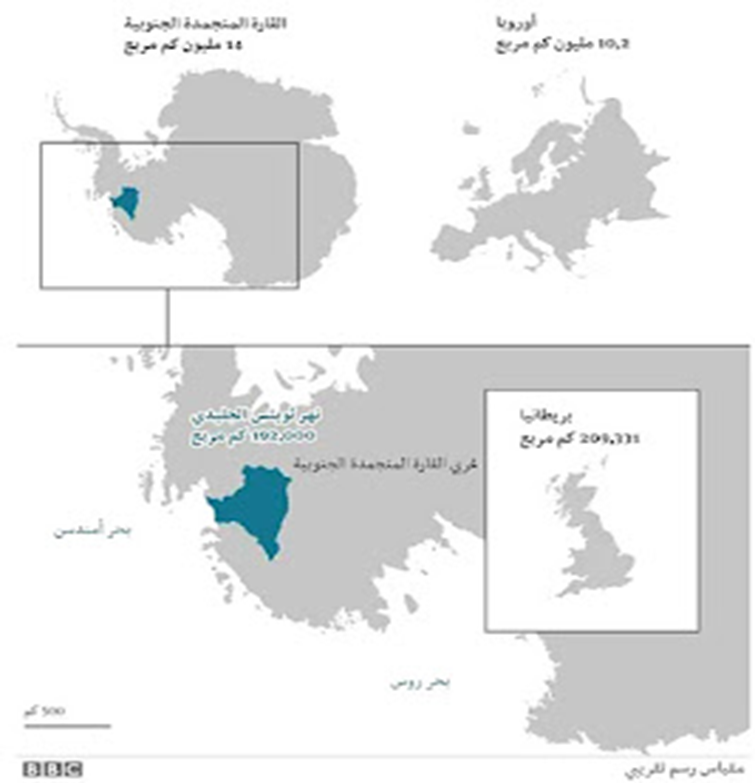The afterlife glacier, the most dangerous river in the world
The water area constitutes the largest and greatest part of the total area of the globe, as the percentage of water exceeds 70% of the area of the globe. Now.
And in today's topic, we will talk about one of the most famous, most important and dangerous bodies of water, even if it is frozen (the hereafter glacier) or the Thoths River.
Definition of a river:
The river is a natural, fresh water course, and the river extends between two banks, one of which is the source and the other downstream. The mouth may be a sea, an ocean, or even a lake. The fresh water of the river consists of rain or other water bodies such as lakes or water originating from the eyes of the earth.
Akhirah Glacier:
Afterlife Glacier
Scientists specializing in the study of the glacier describe the Thwaites River as the most important and most dangerous glacier in the world. It is considered the fifth continent in the world in terms of area, which may cause a catastrophic rise in sea levels. Stressing that climatic changes are of great importance, especially in that critical region.
The US space agency, NASA, had previously discovered the existence of a large hole, hole or void under the Doomsday River, as some call it, or the Thoths River. Scientists have warned of the growing hole, which is estimated to represent an area of 10,000 football fields.
It is reported that the Antarctic ice sheet, the frozen continent, contains 8 times the ice sheet found in Greenland, the coldest place in the world and the largest island in the world.
The size of this giant glacier represents a very great danger if it melts, as the area of the Theots River, or as it is known, the glacier of the Hereafter, is close to the size of Britain.
This glacier is responsible for 4% of the annual sea level rise, which is a huge number for a single glacier. Satellite images show that the Thoths River is melting at an accelerating pace.
The Thwaites Glacier contains enough water to raise the sea level by more than half a meter, making the Hereafter Glacier one of the most dangerous rivers and one of the most dangerous and sensitive places on earth.
The Thwaites Glacier is located in the center of the Western Antarctic Ice Sheet, which is a huge basin of ice that, when melted, can raise the sea level by more than three meters.
Thots River
However, no one has attempted an extensive scientific survey of this important glacier until this year.
The team operating the submarine (Iseven) with about 40 scientists form the Thwaites Glacier International Collaboration, a joint British project that takes 5 years and costs 50 million dollars, and scientists make holes in the ice using steel equipment or by small explosives or even by pouring huge quantities of hot water is estimated at thousands of liters of water to melt tons of ice in an attempt to reach the river water and trying to find out why the river water attacked the ice at such an accelerating pace, so making holes with hot water to the point of boiling is not an easy thing, especially since the temperature of the ice reaches more than 25 degrees Celsius below zero.
The western part of Antarctica is the most stormy of the continent and the most stormy in the world.
The Thwaites glacier is isolated and remote, even by the standards of this remote continent, as the river is 1,600 km away from the nearest research point. Which greatly makes it difficult for the scientists' task due to the constant need for planes that carry scientists back and forth hundreds of kilometers and exorbitant fuel costs in addition to equipment transfers.
Only 4 people reached the front edge of the glacier in the past, and those who were the vanguard of the team working there now.
But it is very important and vital to understand what is happening there so that scientists can predict sea level rise in the future. With a serious study of climatic changes, which may be the main factor in its melting, especially since there is nothing to stop the melting of the river.
It is worth noting that Antarctica contains 90% of the world's fresh water and 80% of the ice that contains this water is located in the eastern part of the continent. The ice in the eastern part of the continent is characterized by a thickness of more than 1.6 km on average, but it is located on high ground and does not move to the sea except very slowly.
But the situation is very different in the western part of the continent, as this part is smaller in terms of area, although it is vast, yet it is subject to change much more than its eastern counterpart.
In general, the Thoths River will not disappear overnight, but may take decades to become a devastating threat, but climate changes, rising temperatures and the arrival of warm waters may accelerate the melting of the giant and most dangerous glacier in the world.
Scientists explain that the danger of rising sea levels through the melting of the glacier of the Hereafter lies in the fact that rising sea levels leads to severe floods and an increase in severe storms that were occurring very far apart. A rise in sea level of only one meter is enough to repeat those very severe storms within a short time. It is very short in light of the fact that the sea level rise resulting from the melting of the glacier is estimated at more than three meters, in addition to the fact that the melting of the glacier causes the melting of rivers or other glaciers around it, which threatens the land and makes many cities and countries face the risk of drowning.
https://www.masa-pro.com/2020/12/blog-post_5.html?fbclid=IwAR3U2u-qD67QdmT4zpb_Wv2MRDMSkhx-cJieiKgFzqzwXR3YBnILuzNnvxo



